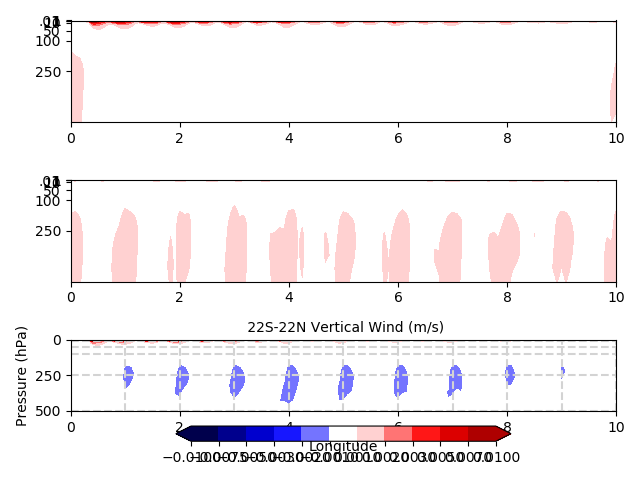
Changes in the Brewer-Dobson Circulation After Stratospheric Soot Injections
Background
Mills et al. (2014) found a reduction in the strength of the stratospheric overturning circulation, as a result of heating of the stratosphere and cooling of the surface from a 5 Tg soot injection. This differential heating reduces the average velocity of tropical updrafts by more than 50% (Mills et al., 2014).
Methods: Quantifying Brewer-Dobson Circulation
Garcia and Randel (2008) examined changes in the Brewer-Dobson circulation due to changes in greenhouse gases using WACCM3. Changes in the BD would alter the transport of stratospheric tracers, changing the 'age of air' (AOA), which becomes younger as GHG concentrations increase. Wave excitement is the mechanism behind the weakening/strengthening of the BD circulation, and warming leads to increased waves and cooling leads to a decrease in waves. The zonal mean wind is in geostrophic balance with the zonal mean temperature, so changes in the BD circulation can also be attributed to temperature trends.
1. Examine vertical velocity over the tropical stratosphere during the nuclear war run and compare it to the control run. (Figure 4 - Mills et al., 2014)
2. EP flux divergence
3. TEM flow diagrams
Results
Tropical Stratosphere Vertical Velocity
Top:
150 Tg soot injection actual vertical velocity
Middle: Control
actual vertical velocity
Bottom: 150 Tg soot injection vertical
velocity anomaly
A reduction in vertical velocity in the tropical stratosphere is most obvious during boreal winter between 400 hPa and 200 hPa. Interestingly, a decrease in the amount of upward propagating energy has been known to lead to a +AO pattern, which is exactly what is occurring in the Arctic due to the stratospheric temperature gradient, causing an increase in zonal winds in the high latitude stratosphere. An increase in vertical velocity occurs in the soot injection case above .1 hPa in the upper stratosphere. This provides evidence that updrafts from the troposphere to the stratosphere over the tropics during boreal winter are decreasing, which bolsters the argument that upward propagating wave activity is decreasing, leading to a decrease in the BD circulation.
